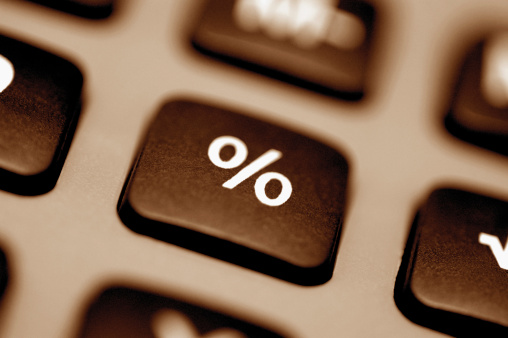Banking, finance, and taxes
Fed Funds Rate Hike: Timing and Severity Are Greatly Overblown
Published:
Last Updated:
If the financial markets were able to write a history book ahead of time, the theme for 2015 would likely be “the year that Janet Yellen and the Federal Reserve finally raised interest rates.” Market pundits and economists have been predicting a rise in the federal funds rate for quite some time, and the first fed funds rate hike still seems likely to occur in 2015. What investors need to consider in 2015, versus prior years, is that this interest rate hike cycle is unlikely to be the same as prior rate hike cycles. It is likely to be far slower and much more muted, and many market participants want a return to somewhat normalcy in interest rates.
24/7 Wall St. has evaluated many tools and the commentary from market pundits and market economists. After looking at the commentary over recent weeks and comparing to the latest CME 30 Day Federal Funds Futures, it almost seems ridiculous that the market is worried about interest rates in the coming months and coming three years.
As of the end of March and start of April, investors should have little fear of a unilateral wave of sweeping interest rate hikes. It is now possible that it could even be later than 2016 when interest rates even come close to normal levels again.
ALSO READ: 10 Disappearing Middle-Class Jobs
So, what is the real-world money betting telling you? It is easy enough to discuss opinions, but there is real money being traded around fed funds futures each and every day. This measurement is where financial market participants are signaling when rate hikes to certain levels are expected.
The fed funds futures are not giving a 100% chance of fed funds rising to a formal 0.25% until the month of October 2015 — even though there is still a chance of a rate hike in September 2015.
Again, looking at fed funds futures is evaluating what the real money being put to work is doing. It may not be a perfect tool, but it is still real-world money betting rather than mere armchair forecasting.
The CME shows that the interest on each fed funds contract has a face value of $5,000,000 for one month, calculated on a 30-day basis at a rate equal to the average overnight fed funds rate for the contract month. Also, the fed funds futures go out for three years and tend to become less liquid and much less traded than closer months.
As of Thursday, April 2, 2015, the 0.25% increments in fed funds are expected by the actual market with a 100% chance being priced in (with color added) are as follows:
Amazingly, a 1.75% fed funds rate is now no longer on the three-year fed funds futures pricing of a 100% certainty. It was projected to be 1.75% in February 2018 just a week ago. Again, the farther out the less traded and less accurate the contracts seem to be. We have included a snapshot of the 30 Day Federal Funds Futures from the CME.
ALSO READ: America’s Highest Paying Companies
24/7 Wall St. will be looking at this more in-depth in the weeks and months ahead. Oddly enough, that 1.00% fed funds pricing out to November of 2016 would be right after the European Central Bank is slated to end its 60 billion euro per month in bond and asset purchases. A lot can happen between now and then on both sides of the rate hike coin.
Stay tuned.
Thank you for reading! Have some feedback for us?
Contact the 24/7 Wall St. editorial team.